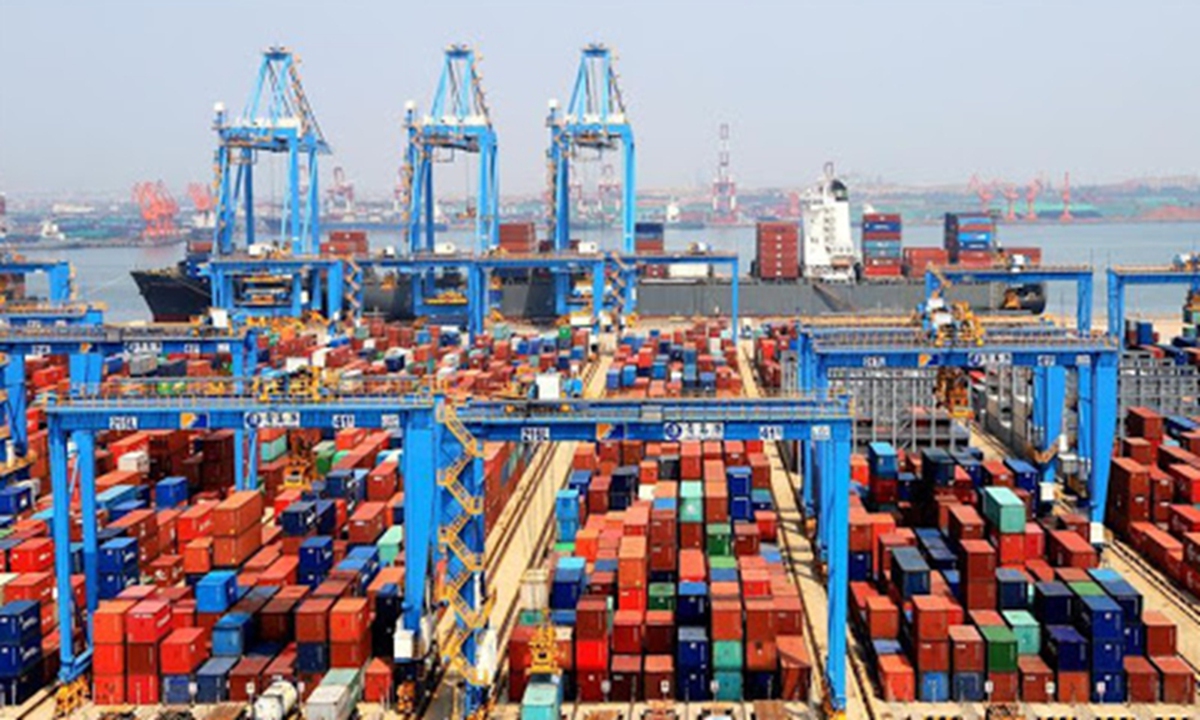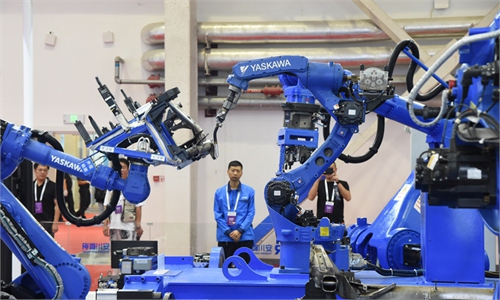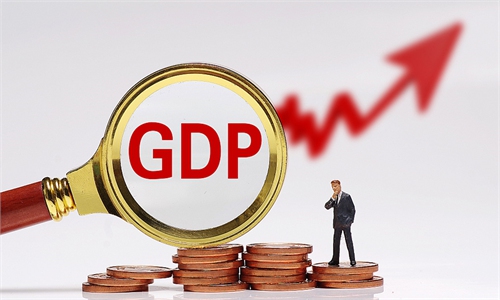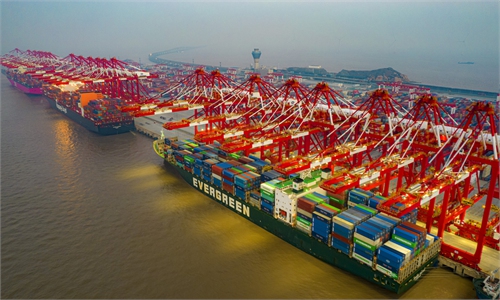
China economy Photo: Xinhua
China's gross domestic product (GDP) expanded 8.1 percent year-on-year to $18 trillion in 2021, data released by the National Bureau of Statistics revealed on Monday.
The country's ever-expanding economic size, about 80 percent of the US' economy, reflects that China has continued to narrow the gap in GDP with the US in 2021, a development in stark contrast to some sensational headlines talking down the Chinese economy by Western media outlets in the past year.
Over the past year, several high-profile forecasts spun out by Western media outlets, such as articles titled The Slow Meltdown of the Chinese Economy, China's Economic Miracle Is Ending, and China's Lehman Brothers moment? Evergrande crisis rattles, etc., are nothing but prime examples proving Westerners' lack of understanding about the Chinese economy.
In fact, in the past many years, pessimistic Western predictions about the Chinese economy have always turned out to be far-fetched and disconnected from reality. If half of them were even close to true, the Chinese economy would have already collapsed several times.
The fundamental reason why the Western media cannot precisely judge the Chinese economy is because they used to superimposing Western ideological values and theories on their skewed analyses, which always cause them to have a pessimistic view of China's growth.
It is precisely such kind of misleading and distorted forecasts that have affected the Western economic ties to China, to the detriment of their potential to share dividends from China's economic growth.
Now the majority of the Western media reports predict China's economic growth will fare badly in the first quarter of 2022. It is undeniable the Chinese economy will face some pressures in 2022, and its first-quarter performance will be closely watched for more clues over what the future may hold.
For starters, due to the relatively high base in the first quarter of 2021, even if the economy retains the same growth momentum this year, the growth figure in the first quarter may fail to match last year's performance.
Secondly, the sporadic coronavirus outbreaks these days have led to restrictive measures being introduced, which will affect economic activities in the first quarter.
And, debt woes faced by the property developers, volatile commodity prices, and disruptions in global supply chains are expected to continue to have negative impact on Chinese economy over coming months.
Yet, all these problems don't translate into China not having the tools to tackle the problems when it comes to stabilizing and stimulating economic growth.
Take monetary policy as an example, the People's Bank of China lowered the medium-term lending facility (MLF) interest rate by 10 basis points on Monday, the first time since April 2020, a continuation of the moderate easing policy after the cut of the reserve requirement ratio (RRR) last month. It could be a sign that China will seize the time window to adjust monetary policy by pumping liquidities to the system to stabilize economic growth.
We believe China's ability to reform and adjust its economy will be stronger than Western media commentators would suggest, and we hope that they could objectively reassess China's economic resilience.



